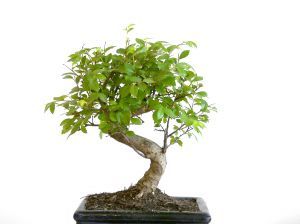Indoor bonsai plants have a lovely and calming look and they are ideal for a decorative corner in your house, work place or indoor balcony. It is important for you to take delicate care of your bonsai trees so that they maintain their pleasant appearance. Here are a few basic tips that will help you grow your beautiful indoor bonsai plants with ease.
Tip #1 – Sunlight
The right growing environment for your indoor bonsai plants is essential to their proper growth. They should be kept in a room with moderate temperature that is not too hot or cold. In addition, the room should have a constant source of natural light in the day time ensuring that your plants get all the light they need to grow correctly. A room with a bay window or large windows where the sunlight can penetrate through to reach the plant is sufficient.
Tip #2 – Soil
Using the correct soil is another one of the essentials in growing your indoor bonsai plants. The highest quality of soil will keep your indoor bonsai plants nourished and in the best shape. Different types of soils are available on the market and sometimes you may need to use a different type of soil for a specific bonsai plant type. You can find the right type of soil by going to your local gardening store and asking them. Make sure to mention the exact type of the bonsai plant and they will suggest to you the kind of soil needed to grow it.
Tip #3 – Fertilizer
Fertilizer is an important factor in the health of your indoor bonsai plants. If not applied correctly, it can actually end up damaging your plant. This is a common mistake made by beginner gardeners, but can be easily avoided by providing the plant with a water-soluble fertilizer at different times. It is best to use the highest quality fertilizer and applied only when the soil is wet.
Tip #4 – Water
Water is an essential source of nourishment for you indoor bonsai plants. Be aware though that watering the plant excessively can cause it over hydrate and die. On the other hand, not enough water can cause the plant to dehydrate and die as a result also. The important point to keep in mind here is to wait until the soil of the plant is near dry. You can then add water until the soil is saturated and water is seeping through the bottom. Repeat the same process when the soil is beginning to dry out again. This process will ensure your bonsai plant always has the right amount of water.
Tip #5 – Pruning
To keep your indoor bonsai plants healthy, you need to do some pruning to both the branches and the roots. The branches need to be pruned in the spring, leaving only the ones you want to keep. The roots are to be pruned when they begin to bound in the pot.
If you keep all these tips in mind, caring for your indoor bonsai plants will become not only easy but very enjoyable like any other gardening experience.






